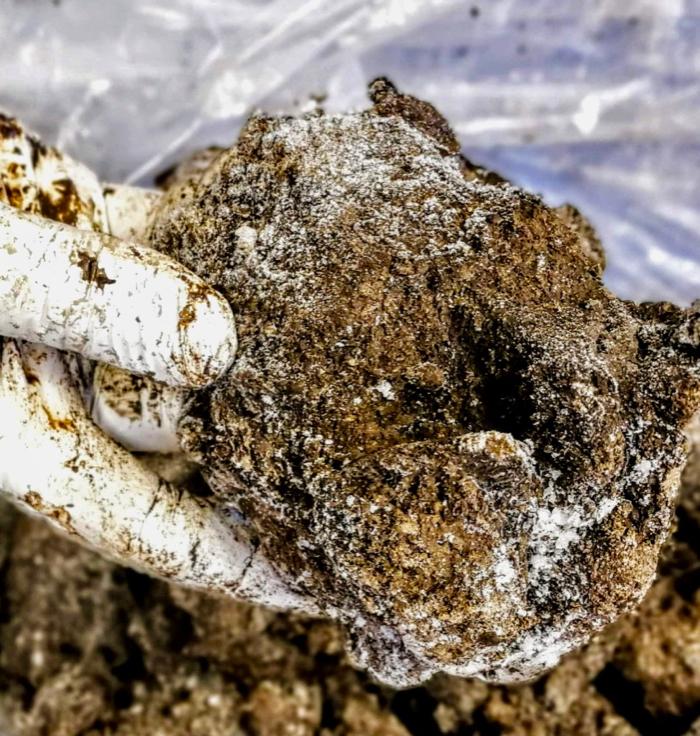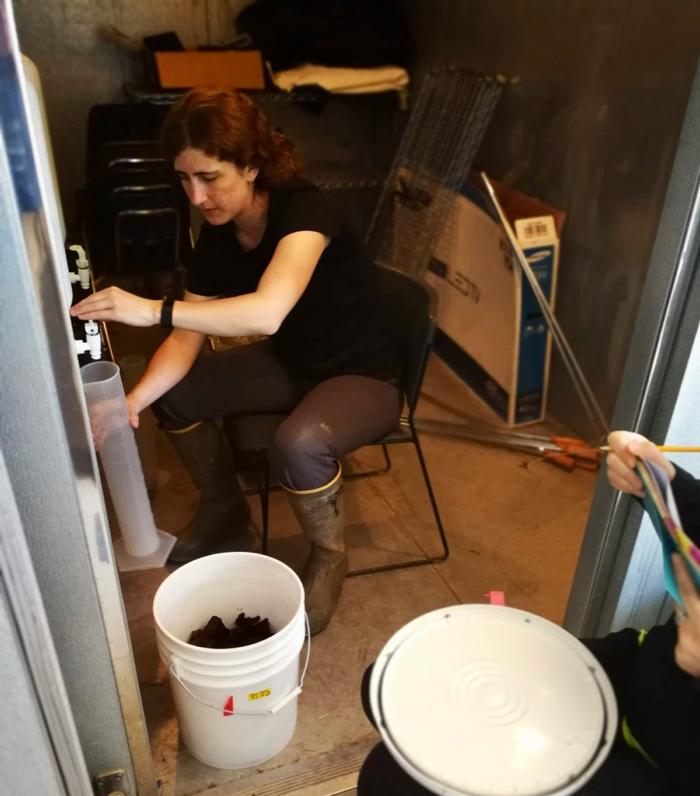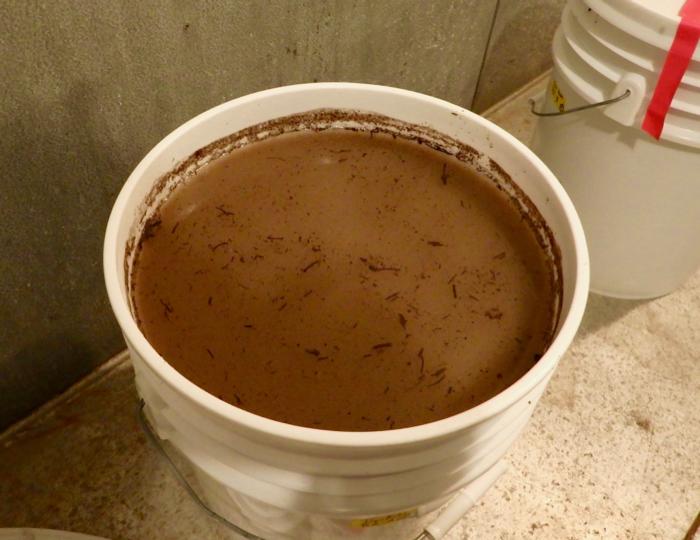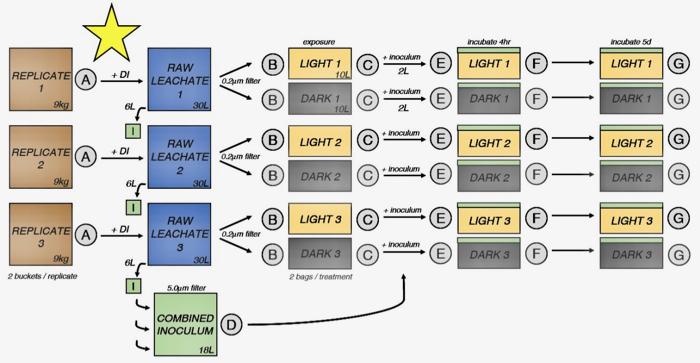Photo-Bio Part 2: Brewing Permafrost Tea
Toolik Field Station, North Slope, AK
June 11, 2019
Video of the Day:
Thawed permafrost (and its dissolved organic carbon) has quite the unique smell, and I’ve heard this smell described in a wide variety of ways. We’ve been working quite a bit with this stuff over the past couple of days, so the smell is everywhere. Here are the many different olfactory interpretations from the folks in the Cory/Kling/Crump group.
As a preface to this post, you’ll benefit from reading my overview of the photo-bio project and my report on the permafrost pits we dug. It’s important to pay attention to the key independent variables:
- Soil Type - Surface layer (organic mat) soil vs. permafrost
- Sunlight Exposure - Dark control vs. sunlight-exposed.
We finally finished digging all three permafrost pits and sampling from them, taking samples from surface mat and permafrost layers. Yesterday, we began the next phase of experimentation with the permafrost samples, which entailed adding water to permafrost samples to brew a concentrated elixir of permafrost extract (“permafrost tea”). This tea is brewing at 7°C in 5 gallon buckets; 4.5 kg of permafrost was added to each bucket, along with 15 liters of water.
 Permafrost sample, prior to solid liquid extraction. Image Source: Karl Romanowicz (University of Michigan).
Permafrost sample, prior to solid liquid extraction. Image Source: Karl Romanowicz (University of Michigan).
 4.5 kg of permafrost sample in the extraction bucket, prior to adding water. Image Source: Karl Romanowicz (University of Michigan).
4.5 kg of permafrost sample in the extraction bucket, prior to adding water. Image Source: Karl Romanowicz (University of Michigan).
 Graduate student Natasha Christman (Oregon State University) adds water to permafrost sample to begin the solid-liquid extraction. Image Source: Karl Romanowicz (University of Michigan).
Graduate student Natasha Christman (Oregon State University) adds water to permafrost sample to begin the solid-liquid extraction. Image Source: Karl Romanowicz (University of Michigan).
This solid-liquid extraction will be carried out for 3 days (72 hours). The below photo was taken today, after 24 hours of extraction, and the liquid phase already resembles chocolate milk. It has a very strong earthy odor, difficult to describe (see above video), which has already filled entire cold room.
 "Permafrost Tea" (coarse leachate) after 24 hours of extraction.
"Permafrost Tea" (coarse leachate) after 24 hours of extraction.
Natasha Christman, graduate student from Oregon State University who is leading this project, provided me with a nice flow chart of the entire photo-bio experimentation process. It is below, and I’ve starred (yellow) our current location - brewing permafrost tea (called “raw leachate”).
 Timeline of the processing of soil samples for the photo-bio research project this summer. What we're currently doing, preparation of raw DOC leachate, is starred (yellow). Two of the above-described buckets will constitute one replicate; as the diagram illustrates, there are three replicates, so six total buckets of permafrost raw leachate. Image Source: Natasha Christman (Oregon State University).
Timeline of the processing of soil samples for the photo-bio research project this summer. What we're currently doing, preparation of raw DOC leachate, is starred (yellow). Two of the above-described buckets will constitute one replicate; as the diagram illustrates, there are three replicates, so six total buckets of permafrost raw leachate. Image Source: Natasha Christman (Oregon State University).
This is definitely a complicated diagram, but it has really helped me with the big picture. Try comparing this diagram to my written overview of the project. I’ll try to return to this diagram every step of the way as a graphical timeline.
When the extraction has completed to yield raw leachate of sufficient concentration, the next step will be filtration. So far, the experiment is going very well!
Comment below!


Comments
Add new comment